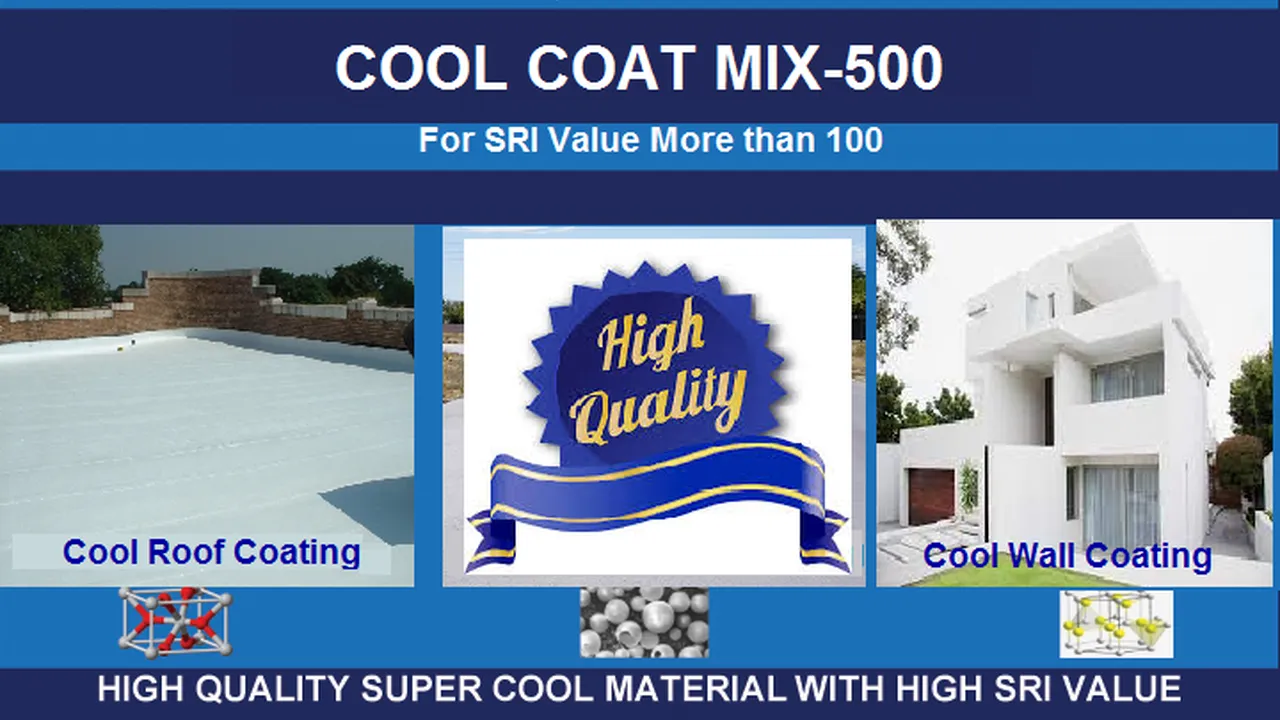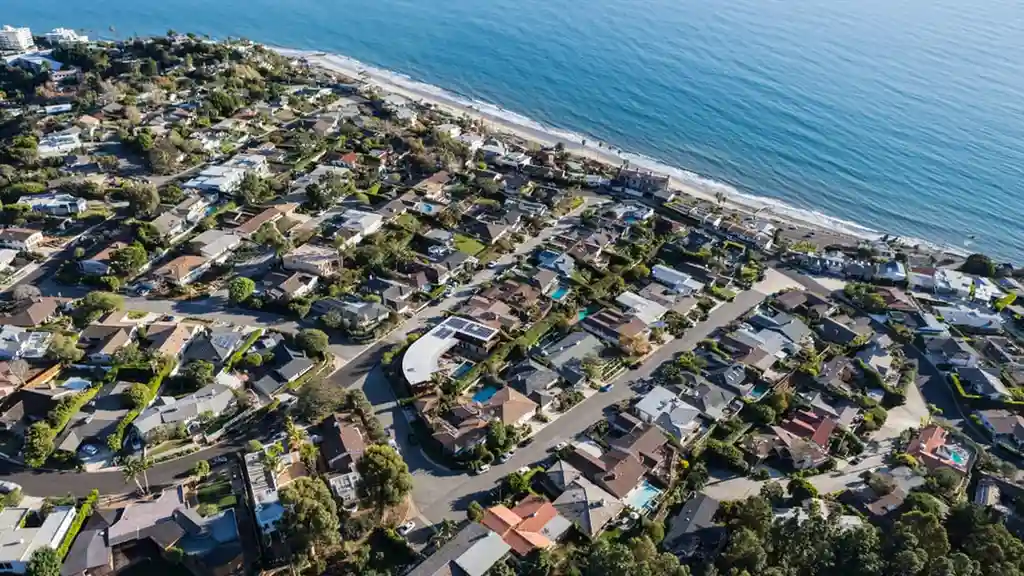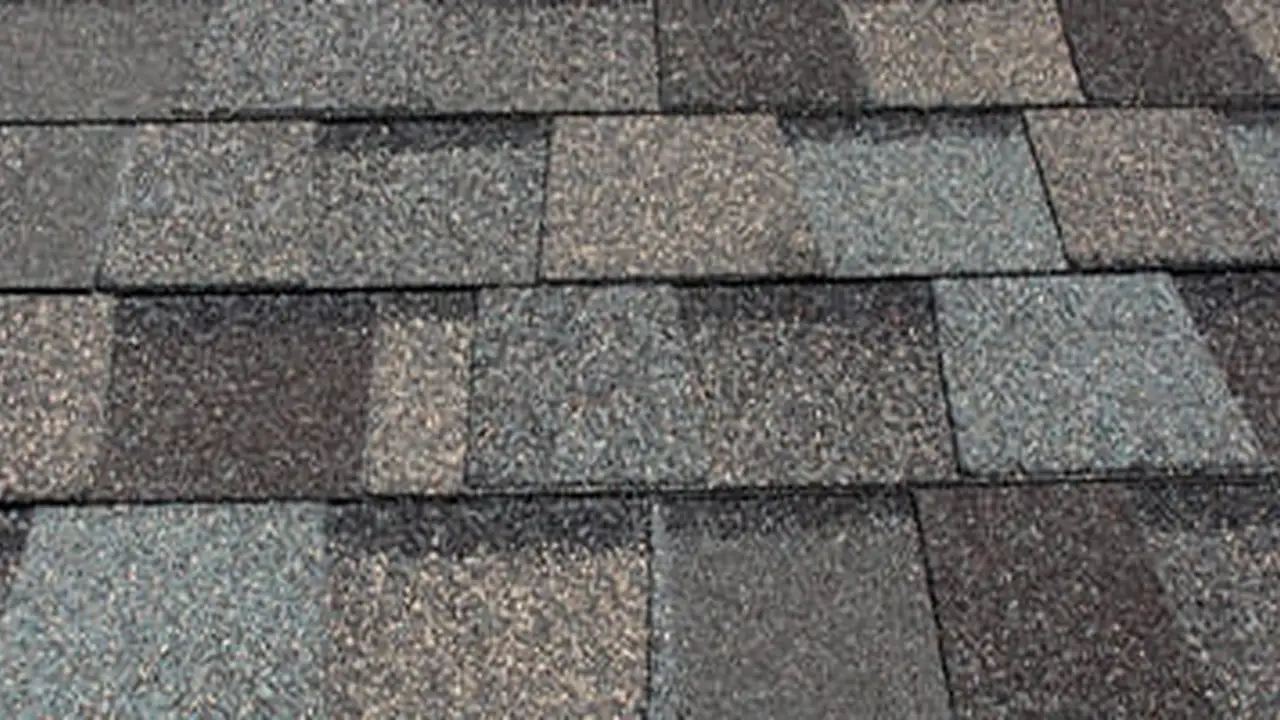Cool Roof Coatings for Energy Efficiency
Learn about cool roof coatings that reflect sunlight and reduce heat absorption, leading to significant energy savings.

Learn about cool roof coatings that reflect sunlight and reduce heat absorption, leading to significant energy savings.
Cool Roof Coatings for Energy Efficiency
Hey there, homeowners! Are you tired of your air conditioning working overtime, especially during those scorching summer months? Do you live in a region where the sun beats down relentlessly, turning your attic into an oven? If so, you’re in for a treat because we’re diving deep into the world of cool roof coatings. These aren't just fancy paints; they're a smart, energy-efficient solution designed to keep your home cooler, reduce your energy bills, and even extend the life of your roof. Whether you're in the sunny states of the US or the humid climates of Southeast Asia, understanding cool roof coatings can make a huge difference for your comfort and your wallet.
What Are Cool Roof Coatings Understanding Reflective Roof Technology
So, what exactly are cool roof coatings? Think of them as a high-tech shield for your roof. Unlike traditional dark-colored roofing materials that absorb a lot of sunlight and heat, cool roof coatings are designed to do the opposite. They have two main superpowers: solar reflectance and thermal emittance. Solar reflectance is how much sunlight the roof reflects away from your home. The higher the reflectance, the less heat your roof absorbs. Thermal emittance, on the other hand, is how well the roof releases any absorbed heat back into the atmosphere. A high emittance means your roof doesn't hold onto heat for long. Together, these properties significantly reduce the amount of heat transferred into your building, keeping your indoor spaces cooler and more comfortable without cranking up the AC.
These coatings typically come in lighter colors, often white or light gray, but advancements in technology mean you can now find cool roof coatings in a wider range of colors, including darker shades that still offer excellent reflective properties. This is achieved through special pigments that reflect the invisible near-infrared (NIR) portion of the solar spectrum, which is responsible for most of the heat gain. So, you don't necessarily have to sacrifice aesthetics for efficiency anymore.
Why Choose Cool Roof Coatings Benefits for Homeowners and the Environment
The benefits of cool roof coatings are pretty compelling, both for you and for the planet. Let's break them down:
Energy Savings and Reduced Utility Bills
This is often the biggest draw for homeowners. By reflecting more sunlight and emitting absorbed heat, cool roofs keep your attic and interior spaces cooler. This means your air conditioning system doesn't have to work as hard, leading to a noticeable drop in your electricity bills. In hot climates, these savings can be substantial, often ranging from 10% to 30% on cooling costs. Imagine what you could do with that extra cash!
Enhanced Indoor Comfort and HVAC System Longevity
Beyond the financial savings, a cooler home is a more comfortable home. You'll experience more consistent indoor temperatures, reducing hot spots and making your living spaces more enjoyable. Plus, when your HVAC system isn't constantly running at maximum capacity, it experiences less wear and tear. This can extend the lifespan of your air conditioning unit, saving you money on repairs and premature replacement.
Extended Roof Lifespan and Reduced Maintenance
Heat is one of the biggest enemies of roofing materials. Constant exposure to high temperatures can accelerate the degradation of shingles, membranes, and sealants, leading to cracking, warping, and premature failure. Cool roof coatings protect your roof from these thermal stresses, keeping the roof surface temperature significantly lower. This can dramatically extend the lifespan of your existing roof, delaying the need for costly replacement. Less heat also means less expansion and contraction, which can reduce the likelihood of leaks and other maintenance issues.
Environmental Impact and Urban Heat Island Effect Mitigation
Cool roofs aren't just good for your home; they're good for the environment too. By reducing the need for air conditioning, they decrease energy consumption, which in turn lowers greenhouse gas emissions from power plants. Furthermore, cool roofs play a crucial role in mitigating the urban heat island effect. This phenomenon occurs in urban areas where dark surfaces like roofs and pavements absorb and re-emit solar heat, making cities significantly hotter than surrounding rural areas. Widespread adoption of cool roofs can help lower ambient air temperatures in cities, improving air quality and reducing heat-related illnesses.
Types of Cool Roof Coatings Exploring Different Formulations and Applications
Cool roof coatings aren't a one-size-fits-all solution. There are various types available, each with its own characteristics and best-suited applications. Understanding these differences will help you choose the right product for your specific roof type and climate.
Acrylic Coatings for Durability and UV Resistance
Acrylic coatings are perhaps the most common and widely used type of cool roof coating. They are water-based, easy to apply, and offer excellent UV resistance, which is crucial for maintaining their reflective properties over time. Acrylics are known for their durability and flexibility, making them suitable for a variety of roof substrates, including modified bitumen, metal, and single-ply membranes. They typically come in white or light colors, providing high solar reflectance and thermal emittance. Many acrylic coatings are also breathable, allowing moisture to escape from the roof system, which is beneficial in humid environments.
Silicone Coatings for Superior Water Resistance and Ponding Water
Silicone coatings are a premium option, highly valued for their exceptional water resistance and ability to withstand ponding water conditions. This makes them an excellent choice for low-slope or flat roofs where water can sometimes accumulate. Silicone coatings maintain their flexibility and reflective properties even after prolonged exposure to UV radiation and extreme temperatures. They are also highly resistant to biological growth like mold and mildew. While generally more expensive than acrylics, their long-term performance and minimal maintenance requirements often justify the higher initial cost. They adhere well to a wide range of surfaces, including existing asphalt, metal, and single-ply roofs.
Urethane Coatings for Abrasion Resistance and High Traffic
Urethane coatings are known for their toughness and excellent abrasion resistance, making them ideal for roofs that experience foot traffic or are exposed to harsh physical conditions. They offer good flexibility and can withstand significant temperature fluctuations. Urethane coatings come in both aliphatic (UV stable) and aromatic (not UV stable, typically used as a base coat) formulations. They provide good solar reflectance and thermal emittance, though sometimes slightly less than pure acrylic or silicone. Urethanes are often used in conjunction with other coatings or as a topcoat in multi-layer systems to enhance durability and longevity.
Elastomeric Coatings for Flexibility and Crack Bridging
Elastomeric coatings are characterized by their high elasticity, meaning they can stretch and return to their original shape without cracking. This property is incredibly valuable for roofs that experience significant expansion and contraction due to temperature changes. They can effectively bridge small cracks and prevent new ones from forming, offering excellent waterproofing capabilities. Many acrylic and silicone coatings are also elastomeric. These coatings are particularly effective on metal roofs, modified bitumen, and concrete roofs where movement is common.
Hybrid Coatings Combining the Best of Multiple Technologies
As the name suggests, hybrid coatings combine the benefits of two or more coating technologies. For example, an acrylic-urethane hybrid might offer the UV stability and ease of application of acrylics with the toughness and abrasion resistance of urethanes. These formulations are designed to provide optimized performance for specific challenges, offering a balanced set of properties like reflectivity, durability, and water resistance. They represent the cutting edge of cool roof technology, constantly evolving to meet diverse roofing needs.
Top Cool Roof Coating Products A Comparative Review for US and Southeast Asian Markets
Now, let's get down to some specifics. When you're looking to invest in a cool roof coating, you'll encounter a variety of brands and products. Here, we'll highlight some popular and highly-rated options, discussing their features, ideal applications, and approximate price ranges. Keep in mind that prices can vary significantly based on location, supplier, and quantity purchased.
1. GAF United Coatings RoofSaver Acrylic Coating
- Type: Acrylic Elastomeric
- Key Features: This is a high-performance, water-based acrylic coating known for its excellent solar reflectivity and thermal emittance. It's highly flexible, allowing it to expand and contract with the roof, and offers superior UV resistance. It's also mildew and algae resistant, which is a big plus in humid climates.
- Ideal Application: Suitable for a wide range of substrates including modified bitumen, smooth built-up roofs, metal, and concrete. It's a great choice for both residential and commercial flat or low-slope roofs. Its breathability makes it suitable for Southeast Asian climates where moisture management is key.
- Pros: Excellent reflectivity, good durability, easy to apply, environmentally friendly (low VOC), good for humid climates.
- Cons: Not ideal for prolonged ponding water situations.
- Approximate Price Range (US): $0.75 - $1.50 per square foot (material only, two coats).
- Approximate Price Range (Southeast Asia): Similar pricing, but availability might vary. Local equivalents or imports would be in the range of $0.80 - $1.80 per square foot.
2. Henry Tropi-Cool 100% Silicone Roof Coating
- Type: 100% Silicone
- Key Features: Henry Tropi-Cool is a premium, moisture-cure silicone coating that offers exceptional waterproofing and ponding water resistance. It's highly reflective and maintains its reflectivity over time, even in harsh conditions. It's also very durable and resistant to biological growth.
- Ideal Application: Perfect for flat or low-slope roofs where ponding water is a concern. It adheres well to asphalt, modified bitumen, metal, concrete, and existing single-ply membranes. Excellent for both US and Southeast Asian markets due to its superior water resistance and UV stability.
- Pros: Unmatched water resistance, excellent for ponding water, high reflectivity, long-lasting, resistant to mold/mildew.
- Cons: Higher initial cost, can be slippery when wet during application.
- Approximate Price Range (US): $1.50 - $3.00 per square foot (material only, one thick coat).
- Approximate Price Range (Southeast Asia): $1.80 - $3.50 per square foot.
3. Sherwin-Williams Uniflex 2500 Series Acrylic Elastomeric Roof Coating
- Type: Acrylic Elastomeric
- Key Features: This is another robust acrylic elastomeric coating offering excellent solar reflectivity and weather resistance. It's designed to provide a seamless, durable, and flexible membrane that protects against UV degradation and water intrusion. It's also formulated to resist dirt pickup, helping to maintain its cool properties.
- Ideal Application: Suitable for various commercial and residential low-slope roofs, including modified bitumen, smooth built-up, metal, and concrete. A solid choice for general cool roof applications in both target markets.
- Pros: Good reflectivity, durable, flexible, dirt pickup resistance, widely available.
- Cons: Similar to other acrylics, not designed for prolonged ponding water.
- Approximate Price Range (US): $0.80 - $1.60 per square foot (material only, two coats).
- Approximate Price Range (Southeast Asia): $0.90 - $1.90 per square foot.
4. APOC 585 Elastomeric Acrylic Reflective Roof Coating
- Type: Acrylic Elastomeric
- Key Features: APOC 585 is a premium, high-solids elastomeric acrylic coating that provides a highly reflective, seamless, and waterproof membrane. It's known for its strong adhesion, flexibility, and resistance to cracking and peeling. It also offers excellent UV protection and helps reduce heat transfer.
- Ideal Application: Versatile for use on modified bitumen, smooth built-up, metal, concrete, and existing single-ply roofs. A good all-around performer for residential and commercial properties seeking energy efficiency.
- Pros: High reflectivity, strong adhesion, flexible, good waterproofing, cost-effective for its performance.
- Cons: Requires proper surface preparation for optimal adhesion.
- Approximate Price Range (US): $0.70 - $1.40 per square foot (material only, two coats).
- Approximate Price Range (Southeast Asia): $0.75 - $1.60 per square foot.
5. Nutech Paint Tileflex 2000 (for Tile Roofs)
- Type: Acrylic (specifically formulated for tile)
- Key Features: While many cool coatings are for flat roofs, Nutech Paint offers solutions like Tileflex 2000 specifically designed for concrete and terracotta tile roofs. This product provides excellent heat reflection, UV resistance, and a durable finish that protects tiles from weathering and degradation. It comes in a range of colors, including lighter, reflective options.
- Ideal Application: Perfect for homes with concrete or terracotta tile roofs, common in both the US (e.g., Florida, California) and extensively in Southeast Asia. It rejuvenates old tiles while adding cool roof benefits.
- Pros: Specifically designed for tile roofs, good reflectivity, wide color range, enhances appearance, durable.
- Cons: Not suitable for flat or metal roofs.
- Approximate Price Range (US): $0.60 - $1.20 per square foot (material only, two coats).
- Approximate Price Range (Southeast Asia): $0.65 - $1.30 per square foot.
Important Note on Pricing: The price ranges provided are estimates for material costs only. Installation costs will vary significantly based on labor rates, roof complexity, preparation required, and geographic location. Always get multiple quotes from certified contractors for an accurate project cost.
Installation and Maintenance Tips for Optimal Cool Roof Performance
Getting a cool roof coating isn't just about picking the right product; proper installation and ongoing maintenance are crucial for maximizing its benefits and lifespan. Here’s what you need to know:
Professional Installation Versus DIY Considerations
While some cool roof coatings are marketed as DIY-friendly, especially for smaller projects, professional installation is highly recommended for most homeowners. Here's why:
- Surface Preparation: This is perhaps the most critical step. The roof surface must be thoroughly cleaned, repaired, and primed according to the manufacturer's specifications. Any dirt, debris, oil, or loose material will compromise adhesion. Professionals have the right equipment and expertise for this.
- Proper Application: Coatings need to be applied at the correct thickness and in the right number of coats to achieve optimal performance. Too thin, and you won't get the reflectivity or durability. Too thick, and it might not cure properly or could lead to cracking. Professionals ensure even and consistent application.
- Safety: Working on a roof, especially a hot one, can be dangerous. Professionals are trained in roof safety protocols and have the necessary safety gear.
- Warranties: Many manufacturers' warranties are only valid if the product is installed by a certified contractor.
If you're considering DIY, make sure you thoroughly research the product's application instructions, have all the necessary safety equipment, and are comfortable working on your roof. For anything beyond a small shed, calling in the pros is usually the smarter move.
Essential Maintenance Practices for Longevity
Once your cool roof coating is installed, a little maintenance goes a long way in preserving its performance and extending its life:
- Regular Cleaning: Dirt, dust, leaves, and other debris can accumulate on the roof surface, reducing its reflectivity. Periodically clean your roof with a soft brush and water. For stubborn grime, a mild, non-abrasive cleaner recommended by the coating manufacturer can be used. Avoid harsh chemicals or high-pressure washers that could damage the coating.
- Inspect for Damage: Conduct annual or semi-annual inspections, especially after severe weather. Look for any signs of cracking, peeling, blistering, or areas where the coating might have worn thin. Address these issues promptly with touch-ups or repairs as recommended by the manufacturer.
- Clear Gutters and Drains: Ensure your gutters and roof drains are free of clogs. Proper drainage prevents water from ponding on the roof, which can degrade even the most water-resistant coatings over time.
- Address Biological Growth: In humid climates, moss, algae, or mildew can sometimes grow on the roof surface, even on resistant coatings. Gently remove these using appropriate roof cleaning solutions to maintain reflectivity.
Cool Roof Coatings in Different Climates US vs Southeast Asia Considerations
While the core principle of cool roof coatings remains the same, their application and benefits can be particularly impactful in different climatic zones. Let's look at how they fare in the US and Southeast Asia.
Cool Roofs in the United States Diverse Climates and Energy Savings
The US has a vast range of climates, from the hot, arid deserts of the Southwest to the humid subtropics of the Southeast, and the temperate zones of the North. Cool roof coatings offer significant advantages across many of these regions:
- Southern States (e.g., Florida, Texas, Arizona, California): These regions experience prolonged periods of intense heat and sunlight. Cool roofs here can lead to substantial energy savings, reducing the burden on the electrical grid and lowering cooling costs for homeowners. They also help combat the urban heat island effect prevalent in large cities like Phoenix, Miami, and Los Angeles.
- Mid-Atlantic and Midwest: While these areas experience colder winters, the summers can still be quite hot and humid. Cool roofs can provide cooling benefits during these months. Some studies even suggest that the benefits of reduced cooling costs outweigh the minimal increase in heating costs during winter, especially with proper attic insulation.
- Pacific Northwest: Even in cooler, rainier climates, cool roofs can help manage heat gain during summer months and contribute to overall energy efficiency.
In the US, various programs and incentives, such as tax credits and utility rebates, are often available for installing energy-efficient cool roofs, further enhancing their appeal.
Cool Roofs in Southeast Asia Battling Heat and Humidity
Southeast Asia is characterized by its tropical and subtropical climates, marked by high temperatures, intense humidity, and often heavy rainfall. Cool roof coatings are exceptionally well-suited for this region:
- Constant Heat and Humidity: Homes in countries like Thailand, Vietnam, Malaysia, Indonesia, and the Philippines are constantly battling heat and humidity. Cool roofs can significantly reduce indoor temperatures, making homes more comfortable and less reliant on energy-intensive air conditioning. This is crucial for both residential comfort and commercial energy efficiency.
- Monsoon Seasons and Water Resistance: The region experiences distinct monsoon seasons with heavy rainfall. Coatings with excellent waterproofing and ponding water resistance (like silicone) are particularly valuable here to prevent leaks and protect the roof structure from moisture damage.
- UV Degradation: Intense tropical sunlight can rapidly degrade conventional roofing materials. Cool roof coatings, with their superior UV resistance, offer enhanced protection and extend the lifespan of roofs in these challenging conditions.
- Urbanization and Heat Islands: Rapid urbanization in Southeast Asian cities exacerbates the urban heat island effect. Widespread adoption of cool roofs can help mitigate this, leading to cooler cities and improved public health.
For Southeast Asian markets, specific considerations include selecting coatings that are highly resistant to mold and mildew growth, which thrive in humid conditions, and ensuring products can withstand heavy tropical downpours without degradation.
The Future of Cool Roof Technology Innovations and Trends
The field of cool roof technology is constantly evolving, with researchers and manufacturers pushing the boundaries of what's possible. Here are some exciting innovations and trends to watch out for:
Beyond White Exploring Color Options with High Reflectivity
For a long time, 'cool' meant 'white.' But thanks to advancements in pigment technology, we're seeing more and more cool roof coatings available in a wider array of colors, including grays, blues, and even some darker shades, that still offer impressive solar reflectance. These 'cool color' pigments are designed to reflect the invisible near-infrared (NIR) portion of the solar spectrum, which is responsible for most of the heat gain, while absorbing visible light to create the desired color. This means homeowners no longer have to compromise on aesthetics to achieve energy efficiency.
Self-Cleaning and Dirt-Resistant Coatings
One of the challenges with cool roofs, especially lighter-colored ones, is that dirt and grime can accumulate on the surface, reducing their reflectivity over time. Manufacturers are developing self-cleaning and dirt-resistant coatings that incorporate nanotechnology or special surface treatments. These coatings either repel dirt and water more effectively or use photocatalytic properties to break down organic matter when exposed to sunlight, helping to maintain their 'cool' performance with less maintenance.
Integrated Solar and Cool Roof Systems
The ultimate in energy efficiency is combining cool roof technology with solar power generation. We're seeing more integrated systems where solar panels are designed to work synergistically with cool roof surfaces. The cool roof keeps the building below cooler, and also helps the solar panels operate more efficiently, as solar panel performance can decrease with higher temperatures. This dual approach maximizes energy savings and renewable energy generation.
Phase Change Materials PCM Integration
Phase Change Materials (PCMs) are substances that absorb and release large amounts of latent heat when they change phase (e.g., from solid to liquid). Integrating PCMs into roofing systems or coatings can further enhance thermal performance. During the day, PCMs can absorb heat, preventing it from entering the building, and then release that heat slowly at night. This helps to stabilize indoor temperatures and reduce peak cooling loads.
Smart Roofs with Sensors and IoT Integration
The concept of 'smart roofs' is gaining traction. These roofs incorporate sensors that monitor temperature, humidity, moisture levels, and even structural integrity. When combined with cool roof coatings, these smart systems can provide real-time data on performance, alert homeowners to potential issues, and even integrate with smart home systems to optimize energy usage. Imagine a roof that tells you exactly how much energy it's saving or if it needs a cleaning!
Bio-Based and Sustainable Cool Roof Coatings
As environmental consciousness grows, there's a push for more sustainable building materials. Researchers are exploring bio-based cool roof coatings derived from renewable resources, reducing reliance on petroleum-based products. These coatings aim to offer the same high performance while minimizing their environmental footprint throughout their lifecycle.
These innovations promise even more effective, durable, and aesthetically pleasing cool roof solutions in the years to come, making energy-efficient roofing more accessible and beneficial for homeowners worldwide.
Making the Smart Choice Is a Cool Roof Coating Right for Your Home
So, after all this talk about cool roof coatings, you might be wondering if they're the right fit for your home. The answer, more often than not, is a resounding yes, especially if you live in a hot climate or are looking to significantly reduce your energy consumption and environmental footprint.
Consider your current energy bills. If your cooling costs are high, a cool roof coating offers a direct and effective way to bring those numbers down. Think about your comfort level during peak summer months. If your home feels like an oven, a cool roof can dramatically improve indoor temperatures without overworking your AC. And if you're planning a roof replacement or a major renovation, it's the perfect opportunity to integrate this energy-saving technology.
While the initial investment might be slightly higher than some traditional roofing options, the long-term savings on energy bills, extended roof lifespan, and reduced HVAC maintenance often lead to a very favorable return on investment. Plus, the added benefits of increased comfort and contributing to a greener environment are priceless.
Before making a decision, it's always a good idea to consult with a reputable roofing contractor who specializes in cool roof systems. They can assess your specific roof type, climate, and energy needs, and recommend the best coating product and application method for your home. Ask for quotes from multiple contractors, compare their proposals, and ensure they are certified to install the products they recommend.
Embracing cool roof coatings is a smart move for any homeowner looking to enhance their home's energy efficiency, comfort, and longevity. It's an investment that pays dividends for years to come, both for your wallet and for the planet.
:max_bytes(150000):strip_icc()/277019-baked-pork-chops-with-cream-of-mushroom-soup-DDMFS-beauty-4x3-BG-7505-5762b731cf30447d9cbbbbbf387beafa.jpg)






